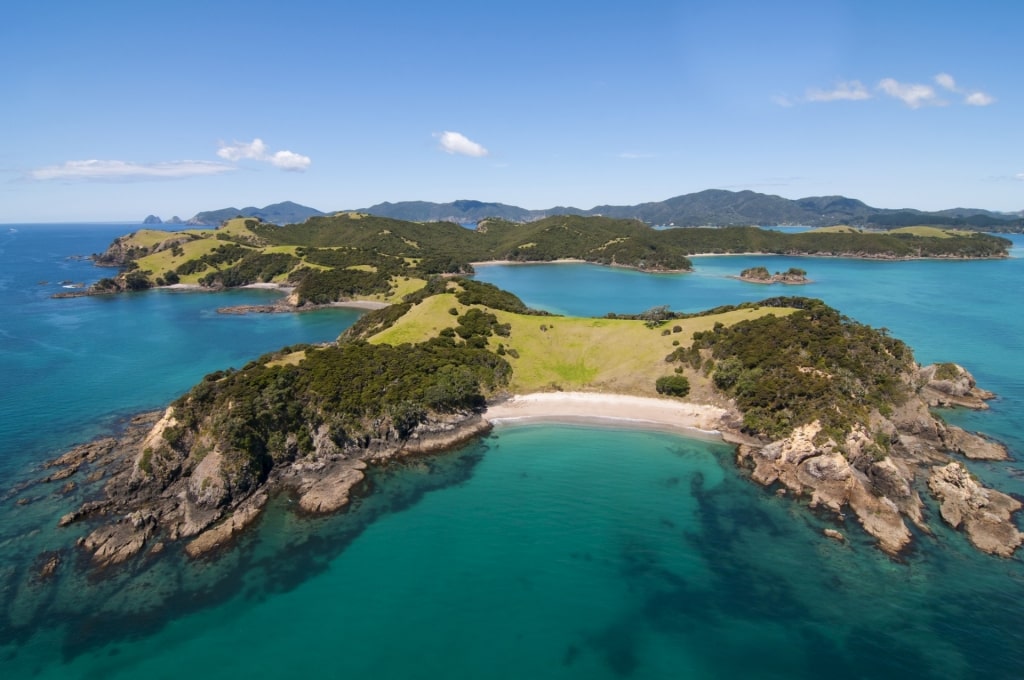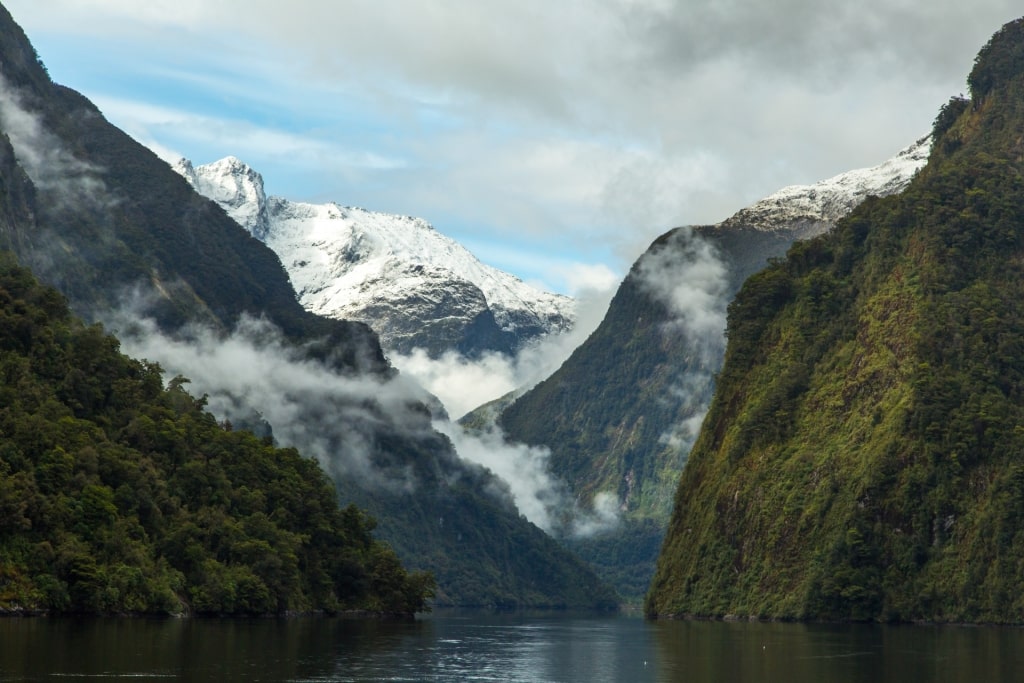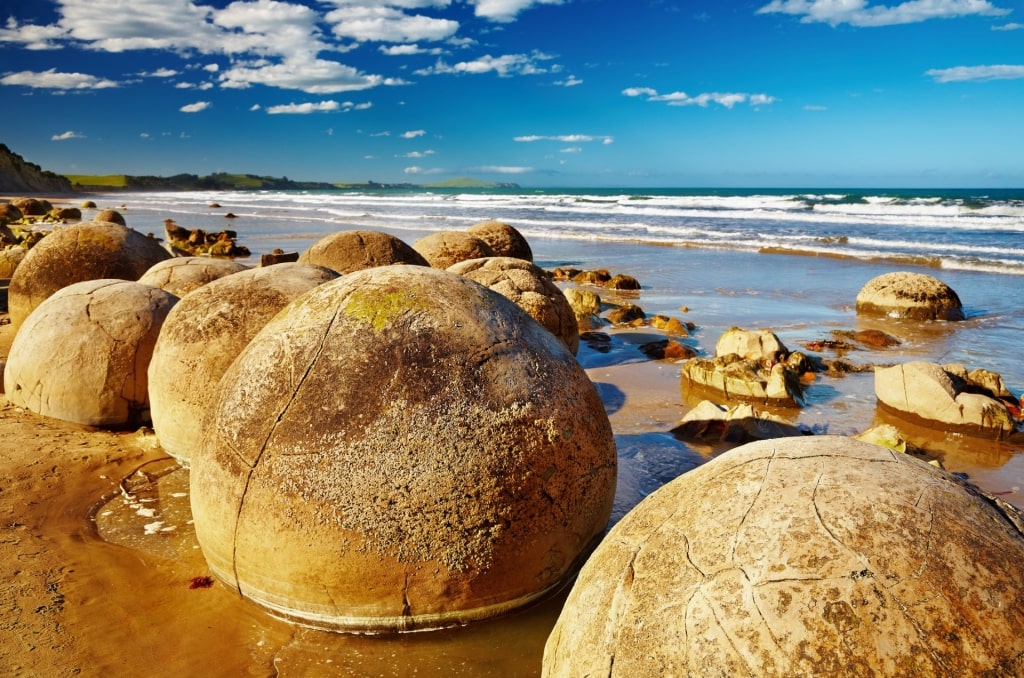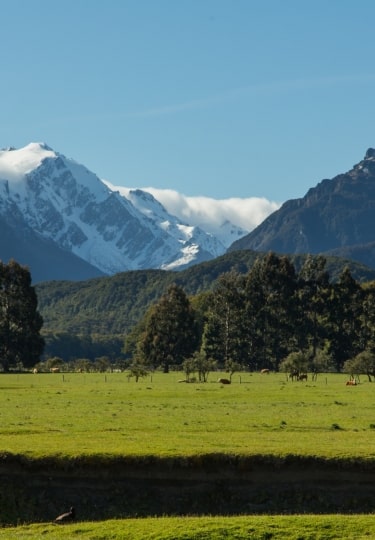The best time to visit New Zealand is from late spring (November) to early fall (April). During these months, the sun-kissed days are longer, blue skies are abundant, and the beaches are most inviting.
While there are still temperature variations between the North and South Islands, these are less noticeable than during winter, meaning this is the best time to go to New Zealand if you’re keen to explore from top to bottom.
Visiting New Zealand By Season
Summer

Bay of Islands
New Zealand’s summer, from late December to late March, brings not just longer days (around 15 hours of daylight in December) but also a packed cultural calendar of outside festivities and sporting events. You’re also most likely to see baby kiwis (the beloved flightless bird that New Zealand is known for) in this period, as the hatching months are usually between June and November.
With temperatures averaging at 73°F (23°C) around the north and Bay of Islands, and 61°F (16°C) further south, in Dunedin, this is the best time to visit New Zealand for reliable and warmer weather across the country.
Fall
Fall is the best time to go to New Zealand for autumnal colors lighting up the country’s forests and woodlands, especially in the South Island, where the changing of the leaves is more evident.
During this season, from late March to late June, you can expect daytime temperatures between 59°F to 68°F (15°C to 20°C) in the nation’s capital, Auckland, while it’s cooler further south.
March to May is when the nation’s wine harvest takes place, ensuring a buzz of activity during any cellar door tastings. From May, showers start to become more regular and noticeable.

Wine tasting
Winter
During New Zealand’s winters (late June to late September), days are much shorter, with between eight to nine hours of daylight depending on which island you’re visiting. Temperatures are also lower, averaging 59°F (16°C) during the day in Auckland and 47°F (8°C) further south.
Winter is the best time to visit New Zealand to witness the night sky come alive with the colorful Southern Lights and to partake in winter snow and ski activities.
Spring
From late September to late December, you’ll find New Zealand returning back to life post-winter, with wildflowers decorating the spectacular hiking trails, gannets coming and going from colonies, and powerful waterfalls tumbling into the sounds, or fjords.
With daytime temperatures ranging from 58°F to 68°F (14 to 20°C) in November, this month is the best time to visit New Zealand for warmer spring days, yet without the arrival of the summer crowds.
Read: Best Beaches to Visit in November

Milford Sound
When Is Rainy Season?
While showers can occur any time of year in New Zealand, upkeeping the lush green scenery, in the north of the country, the rainy season is mainly during the winter months from June to October. Further south, where snow and winter sports are more common, these months can be drier than in the north, with showers more likely in spring or fall.
Luckily, Auckland, Wellington, and Christchurch all have a thriving cultural scene and fantastic museums, meaning rainy days can be spent soaking up the nation’s heritage, history, and creativity.
When Is High Season?
The high season in New Zealand mainly falls during peak summer, though it starts a little before, in mid-December when schools start to break for the Christmas holidays.
While this is the favored time to visit New Zealand, the more than 9,000 miles of coastline, countless fjords, and almost seemingly unlimited and untouched nature ensure that you can still seek out a crowd-free experience even in the peak of summer.
Perhaps the best time to visit New Zealand is in early February, after the schools return, meaning far fewer domestic tourists for the remainder of the warmest months.
When Is Shoulder Season?
The shoulder seasons, late spring and early fall, provide the best time to go to New Zealand for quieter hikes, wine-tasting experiences, and museum visits with far fewer visitors, yet still with a high chance of good weather.
Although weekends can still be busy with locals exploring during New Zealand’s shoulder seasons, you’ll find the museums less visited on weekdays, New Zealand beaches more serene, and the country’s most famous attractions with fewer crowds.

Moeraki Boulders
When Is Low Season?
New Zealand’s low season is during the winter months, from June to September. Still, the South Island is very popular during these months for both Southern Lights sightings and winter sports activities.
In the North Island, the grayer skiers and the likelihood of rain make it a far less appealing time to visit the country. Perhaps the most notable event during this period is Māori New Year (the indigenous people of New Zealand), which takes place in July.
Eager to visit New Zealand’s best attractions and breathtaking bays? Browse Celebrity’s cruises to New Zealand to find your next dream vacation.


